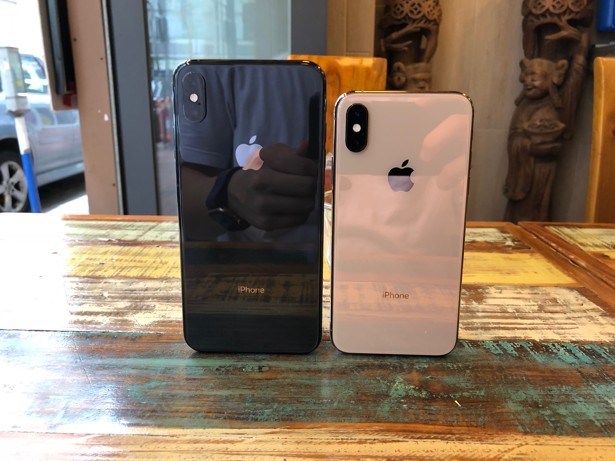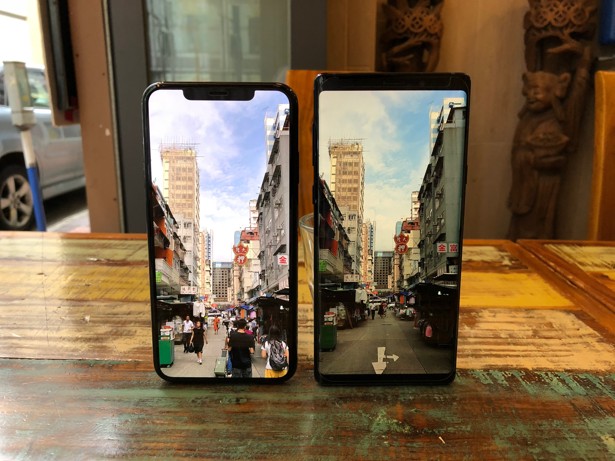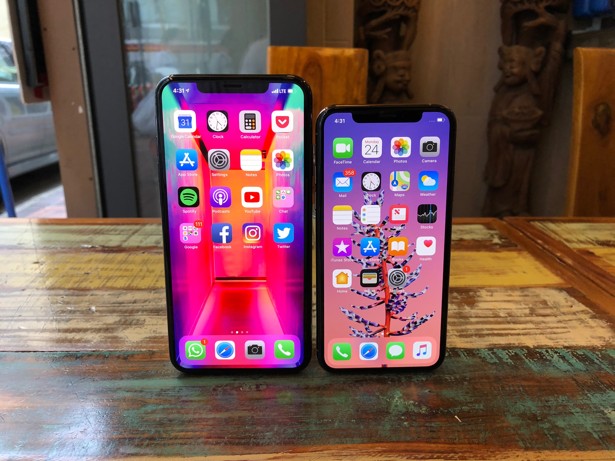
iPhone XS Max full review: stunning screen and photos make upgrade worth it – if you don’t have an X
The 6.5-inch OLED display is an absolute joy to look at – especially when viewing those improved photos – but Apple doesn’t make the most of its possibilities, unlike similar Android devices
Apple’s S-model iPhones have traditionally lacked an immediate wow factor because they look and feel exactly the same as the previous year’s models. But they have made up for that by introducing some of the most useful and important features in iPhone history. The iPhone 3GS, for example, brought video recording; the 4S introduced us to Siri; and the 5S was the first iPhone to have a fingerprint scanner.
This year’s XS, however, has no single headline-grabbing, game-changing new feature. There are a lot of internal improvements, but it is still the most iterative update of an iPhone yet.
The five best iPhone X clones: notch up a design coup for Apple
There is, though, the larger XS Max, whose sheer size alone has created plenty of intrigue – and grabbed all the early sales.
I tested both the XS and XS Max. With the exception of dimensions and battery size, both phones are completely identical in hardware and software. This review will focus on the XS Max, but everything mentioned also applies to the XS unless stated otherwise.
Design and hardware
Considering the ubiquity of the iPhone X, and how many Android phone makers – Xiaomi, ahem – have flat out copied the look, it is safe to assume just about everyone reading this has a general idea of the XS Max’s hardware design. It is essentially a blown-up version of the X and XS.

The handset’s glass front and back still blend seamlessly into the stainless steel frame, and the rounded corners and chamfered edges are still among the most elegant around.
Compared to the blocky, more angular corners of the Samsung Galaxy Note 9, the XS Max is more comfortable to hold. But with a width of 77.4mm, it is still a bit hard to use with one hand. Part of that has to do with iOS, which I will explain in the next section.

People who buy the XS Max will do so for that 6.5-inch OLED display, which is an absolute joy to look at. Its viewing angles are excellent, it is bright enough to be used under direct sunlight, and Apple’s True Tone tech automatically adjusts colour temperature to ease eye strain.
Internally, the new iPhones have got a couple of improvements that will be loved by some and go unnoticed by others.
The first is an improved sensor on the dual main cameras. The megapixel count (12 megapixels) and aperture (f/1.8 on the wide-angle camera, f/2.4 on the telephoto camera) are still the same as the X, but the micron pixel size has been bumped to 1.4 microns from last year’s 1.22 microns.
This means the XS Max can pull in more light and image information per pixel. That number is on par with Google’s Pixel 2 and Samsung’s Galaxy Note 9, but Huawei’s P20 Pro still leads the industry with 1.5 microns.

The second hardware bump is the phone’s seven-nanometre A12 Bionic chipset. In mobile processing the smaller the chipset the better. Right now only Huawei’s yet-to-be-released Kirin 980 can match Apple, while Qualcomm and Samsung are still stuck on 10-nanomentre chipsets.
There is one hardware trait that is exclusive to the Hong Kong and China versions of the XS Max: its SIM tray can carry two SIM cards. The standard XS can only carry one, with second SIM support via eSIM. All other iPhones released elsewhere also can only carry one SIM card.
Software and features
The XS Max ships with iOS 12 installed and, much like the hardware, it is more about refining things than a complete overhaul.
New features include “Screen Time”, which offers in-depth statistical breakdown of a user’s phone usage habits; “Group FaceTime” for video chat with up to 32 other iPhone users; and slightly faster Face ID unlocking times.
Experts grade new tools to fight phone addiction: Apple vs Google
Disappointingly, there are very few software features that take advantage of the XS Max’s larger screen. Some native apps and websites, such as calendar and nytimes.com, will load a “fuller” version in landscape orientation to make use of the extra screen real estate, but those are few and far between.

As mentioned, the XS Max is a bit difficult to use with one hand – and it’s not just because of the larger screen. Similarly sized Android handsets facilitate one-hand use because Android allows app icons to be placed at the bottom of the homescreen for easier access, and for short cut gestures to pull down the notification panel.
On an iPhone, app icons must start at the top of the screen and fill downwards, and the notification panel and control centre can only be accessed by swiping from the very top of the display.
Performance and battery life
Apple’s A12 chipset is super powerful, hitting benchmark scores that stomp all over the best chipsets found on Android phones right now (Huawei’s seven-nanometre Kirin 980 is not available to test yet). Most of that power boost, however, will not be felt by the average iPhone user.

Apple has dedicated much of the A12’s prowess to neural processing, which handles complicated tasks such as running AR (augmented reality), processing heavy graphics and handling computational photography. Phone users who spend most of their time chatting and on social media will not see much difference between the A12 and the A11.
But for power users – especially people who take smartphone photography seriously – the A12 is a significant improvement.
The XS Max uses that neural engine power to snap four images every time the shutter button is pressed and in a split-second examine all four images – some of which might be over- or underexposed – before pulling the best image information from each shot to combine into one photo.

The results are photos that are almost always balanced, even in challenging light conditions such as backlight or low light. Apple’s phones have always captured images with the most accurate colours and balance, and this year’s iPhones take things up another notch.

This “computational photography” also powers the cameras of Huawei’s P20 Pro and Google’s Pixel 2, but the XS Max does it better. There is one major caveat, however: Huawei and Google’s phones are a generation old, and updates are coming in October. The XS Max should be compared to those devices.

The ways the mid-range Vivo V11 beats iPhone X, Samsung Note 9
For everyone else, the competition this year is more heated than ever. These new iPhones are still among the best and arguably most polished devices – but you owe it to yourself to check out Android flagships first, all of which are significantly cheaper.
Key specs
Dimensions: 143.6mm x 70.9mm x 7.7mm (XS); 157.5mm x 77.4mm x 7.7mm (XS Max)
Weight: 177g (XS); 208g (XS Max)
Display: 5.8-inch 2436 x 1125 OLED panel (XS); 6.5-inch 2688 x 1242 OLED panel (XS Max)
Battery: Undisclosed
OS version reviewed: iOS 12
Processor: Apple A12 Bionic
Cameras: 12-megapixel f/1.8 lens with a 12-megapixel f/2.4 telephoto lens; seven-megapixel front-facing camera
Memory: 4GB RAM, 64/256/512GB ROM
Price: HK$8,599 (XS, 64GB), HK$9,499 (XS Max, 64GB); HK$9,899 (XS, 256GB), HK$10,799 (XS Max, 256GB); HK$11,599 (XS, 512GB), HK$12,499 (XS Max, 512GB)

